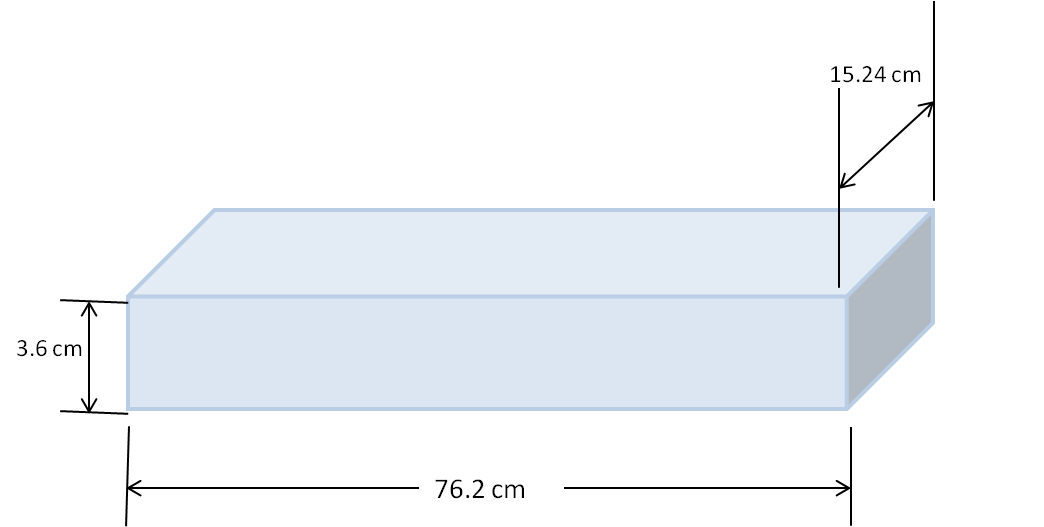Difference between revisions of "2-Neutron Correlation"
Jump to navigation
Jump to search
| Line 5: | Line 5: | ||
* Detector placed 1m away from source<br /> | * Detector placed 1m away from source<br /> | ||
** face of the detector is 15.24cm x 76.2cm, and 3.6cm deep<br /> | ** face of the detector is 15.24cm x 76.2cm, and 3.6cm deep<br /> | ||
| + | |||
| + | [[File:DetectorDimensions.png]] | ||
| + | |||
The solid angle can be found from the number of particles hitting the detector as:<br /> | The solid angle can be found from the number of particles hitting the detector as:<br /> | ||
<math>\Delta \Omega = 4\pi*\frac{hits}{hits + misses}</math> | <math>\Delta \Omega = 4\pi*\frac{hits}{hits + misses}</math> | ||
Revision as of 19:11, 18 May 2012
Big Detector Solid Angle Calculations
- MCNPX Simulation
- 14 MeV neutron source, emitted isotropically ()
- Detector placed 1m away from source
- face of the detector is 15.24cm x 76.2cm, and 3.6cm deep
- face of the detector is 15.24cm x 76.2cm, and 3.6cm deep
The solid angle can be found from the number of particles hitting the detector as:
- Results
- 1E9 Neutrons generated
- 8618287 neutrons hit the detector
- As a test to verify our results
- We change the detector size to 1cm by 1cm and used 1E9 neutrons again
- 32061 neutrons struck the detector
